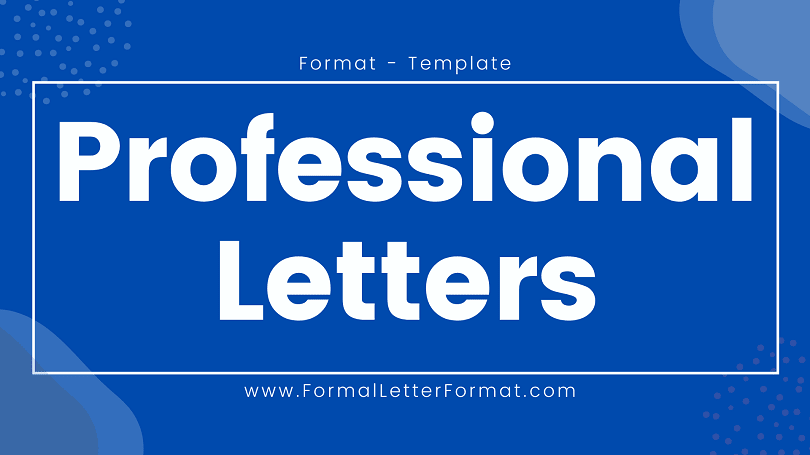Professional Letter Format: Everything you need to know before composing a Professional Letter

The professional letter is a type of formal letter written between business and from businesses to consumers.
For businesses, a professional letter is an extremely essential part of the daily routine. It serves as an important means of communicating with people you’re working with or people you would like to work for. The letter is also important for you to know the right method to reach out to whoever you’re contacting.
Before we begin talking about the format, it is necessary for you to be aware of when a professional letter is relevant. You must write a professional letter when someone holds a high authority title, as well as someone you can usually work professionally with.
Elements of a Professional Letter
Speaking of the right method, using an accurate format is key in writing professional letters. Any professional letter must comprise of these elements in the given sequence:
-
- Sender’s address
- Date
- Receiver’s address (The inside address)
- Greetings/Salutation
- Introduction paragraph
- Body paragraph
- Concluding paragraph
- Enclosures (This is written if any documents have been attached to the letter such as copies of official documents or your resume. If more than one document is attached you can write them down as a list so the recipient knows.)
- Signature
- The initials of the individual who wrote the letter in case you personally did not write it.
The Body & Closing
Once you’re done writing the addresses & salutation, you will start with the introductory paragraph. In the introduction, you will briefly tell the recipient about who you are & why you’re writing the letter to them. It is important to remember that you must keep a cordial tone.
In the body of your letter, you will explain to the recipient in detail about the purpose of your letter. You should avoid going to too much detail as you don’t want the reader to get bored & miss out on the primary points. Keeping it precise should be your goal.
In the second last paragraph, you will write the suitable specifics that back up your main purpose for sending the letter.
Last but not the least, you will be closing the letter with a concluding paragraph that restates why you’re sending the letter & politely asks for measures that you need, if appropriate.
Note: The body should be aligned on the left & must have a single line space after every paragraph.
Tips for an Engaging Professional Letter
-
- Do not use excessive wording.
- Be polite.
- As mentioned above, be precise & concise. If someone is taking their time out to read your letter they might rush through it.
- Use a common font. For example, Times New Roman is generally used in letters & in font size 12.
- It is necessary to proofread a couple of times at least. You never know you might have made grammatical & spelling mistakes or punctuation errors.
- After the salutation add a colon (:)
- Right after the closing use a comma (,)